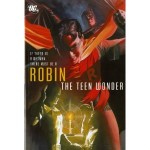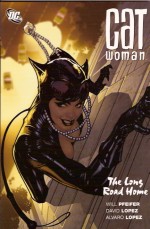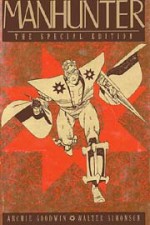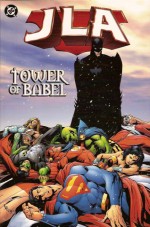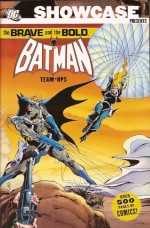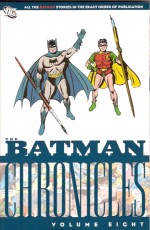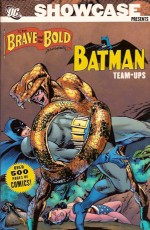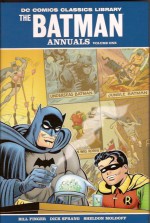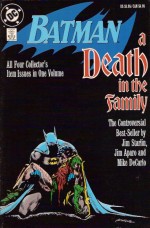
By Jim Starlin, Jim Aparo & Mike DeCarlo (DC Comics)
ISBN: 978-0-93028-944-7
Despite decades of wanting to be “taken seriously†by the wider world, every so often a comic-book event gets away from editors and publishers and takes on a life of its own. This usually does not end well for our favourite art form, as the way the greater world views the comics microcosm is seldom how we insiders and cognoscenti see it.
One of the most controversial comics tales of the last century saw an intriguing marketing stunt go spectacularly off the rails – for all the wrong reasons – becoming instantly notorious and sadly masking the real merits of the piece.
Robin, the Boy Wonder debuted in Detective Comics #38 (April 1940) created by Bob Kane, Bill Finger and Jerry Robinson: a juvenile circus acrobat whose parents were murdered by a mob boss. The story of how Batman took the orphaned Dick Grayson under his scalloped wing and trained him to fight crime has been told, retold and revised many times over the decades and still undergoes the odd tweaking to this day
The child Grayson fought beside Batman until 1970 when, as a sign of the turbulent times, he flew the nest, becoming a Teen Wonder and college student. His invention as a junior hero for younger readers to identify with had inspired an incomprehensible number of costumed sidekicks and kid crusaders throughout the industry, and Grayson continued in similar vein for the older, more worldly-wise readership of America’s increasingly rebellious youth culture.
Robin even had his own solo series in Star Spangled Comics from 1947 to 1952, a solo spot in the back of Detective Comics from the end of the 1960s wherein he alternated and shared with Batgirl, and a starring feature in the anthology comic Batman Family. During the 1980s the young hero led the New Teen Titans, re-established a turbulent working relationship with Batman and reinvented himself as Nightwing. This of course left the post of Robin open…
After Grayson’s departure Batman worked alone until he caught a streetwise young urchin trying to steel the Batmobile’s tires. Debuting in Batman #357 (March 1983) this lost boy was Jason Todd, and eventually the little thug became the second Boy Wonder (#368, February 1984), with a short but stellar career, marred by his impetuosity and tragic links to one of the Caped Crusader’s most unpredictable foes…
Todd had some serious emotional problems that became increasingly apparent in the issues leading up to ‘A Death in the Family’ as the street kid became more callous and brutal in response to the daily horrors he was being exposed to. When he caused the death of a vicious, abusive drug-dealer with diplomatic immunity (and when is that long-neglected sequence of tales going to be collected, huh?) the boy entered a spiral that culminated in the story-arc collected here, comprising Batman #426-429.
Ever more violent and seemingly incapable of rudimentary caution, Jason Todd is suspended by Batman who thinks the boy has not adjusted to the death of his parents. Meanwhile the Joker is again on the loose. But rather than his usual killing frenzy the Clown Prince is after mere cash, as the financial disaster of “Reaganomics†has depleted his coffers – meaning he can’t afford his outrageous murder gimmicks…
Without purpose, Jason has been wandering the streets where he grew up. When he sees an old friend of his dead mother she reveals s a shocking secret. The woman who raised him was not his birth-mother, and moreover there is a box of personal papers that indicate three women who might be his true mother. Lost and emotionally volatile Jason sets out to track them down…
The potential parents are Lady Shiva, world’s deadliest assassin, Sharmin Rosen, Mossad agent and Dr. Sheila Haywood, a famine relief worker in Ethiopia. As the lad heads for the Middle East and a confrontation with destiny he is unaware that Batman is also in that troubled region, hot on the Joker’s trail as the Maniac of Mirth attempts to sell a stolen nuclear missile to any terrorist who can pay…
The estranged heroes accidentally reunite to foil the plot, and Jason crosses Rosen off his potential mom-list. As Batman offers to help Jason check the remaining candidates the fugitive Joker escapes to Ethiopia. After eliminating Shiva, who has been training terrorists in the deep desert, the heroes finally get to Jason’s true mother Sheila Haywood, unaware that she has been blackmailed into a deadly scam involving stolen relief supplies with the Clown Prince of Crime…
I’m not going to bother with the details of the voting fiasco that plagues all references to this tale: it’s all copiously detailed elsewhere (just Google and see) but suffice to say that to test then-new marketing tools a 1-900 number was established and thanks to an advanced press campaign readers were offered the chance to vote on whether Robin would live or die in the story.
He dies.
The kid had increasingly become a poor fit in the series and this storyline galvanised a new direction with a darker, more driven Batman, beginning almost immediately as the Joker, after killing Jason in a chilling and unforgettably violent manner, became the UN ambassador for Iran (later revised as the fully fictional Qurac – just in case) and at the request of the Ayatollah himself attempted to kill the entire UN General Assembly during his inaugural speech.
With echoes of Frank Miller’s landmark The Dark Knight Returns, Superman then becomes a government watchdog tasked with stopping Batman from breaching diplomatic immunity as the vengeance-hungry Caped Crusader attempts to stop the Joker at any cost, leading to a spectacular yet chillingly inconclusive conclusion with the portents of dark days to come…
And here is the true injustice surrounding this tale: the death of Robin (who didn’t even stay dead) and the voting debacle took away from the real importance of this story – and perhaps deflected some real scrutiny and controversy. Starlin had crafted a clever and bold tale of real world politics and genuine issues which most readers didn’t even notice.
Terrorism Training Camps, Rogue States, African famines, black marketeering, Relief fraud, Economic, Race and Class warfare, Diplomatic skullduggery and nuclear smuggling all featured heavily, as did such notable hot-button topics as Ayatollah Khomeini, Reagan’s Cruise Missile program, the Iran-Contra and Arms for Hostages scandals and the horrors of Ethiopian refugee camps. Most importantly it signaled a new and fearfully casual approach to violence and death in comics-books.
This is a superbly readable tale, morally challenging and breathtakingly audacious – but it’s controversial in all the wrong places and for all the wrong reasons. But don’t take my word for it: get it and see for yourself.
© 1988 DC Comics. All Rights Reserved.

